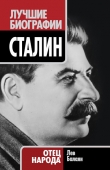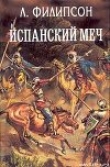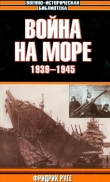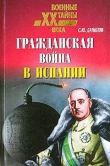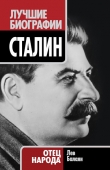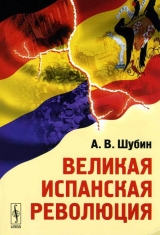
Текст книги "Великая Испанская революция"
Автор книги: Александр Шубин
Жанр:
История
сообщить о нарушении
Текущая страница: 33 (всего у книги 34 страниц)
Los comunistas se empeñaban en cambiar la estrategia del gobierno y política militar, sin detenerse ante destituición del jefe del gobierno si fuese necesario. No obstante, eso no quiere decir que planearon de anticipo toda la marcha de la crisis política de mayo, desde los choques en Barcelona. Estaban dispuestos a actuar decidida y brutalmente, ganando a sus oponentes posición por posición, pero cuando sus acciones en la Ciudad Condal provocaron una exploción de indignación, en el primer momento aun se quedaron perplejos. Es más, el resultado de sus acciones en Barcelona no garantizaba en absoluto que derrotaran a sus adversarios y hasta amenazaba sus posiciones propias. En ésta situación fue los líderes del ala derecha de PSOE y el Presidente Azaña quienes salvaron a los comunistas, lo que resulto en un nuevo reparto del poder, donde las posiciones de los comunistas todavía no eran absolutamente dominantes aunque se reforzaron. Comunistas podían aprovecharse de un motivo menos arriesgado para avanzar en el camino de transformación de España en una «democracia popular». No eran combinadores omnipotentes, su fuerza procedía de la coherencia con que implantaban el estatismo llevando consigo a las estatistas del PSOE.
Después de los hechos de mayo Largo Caballero podía seguir encabezando el gobierno a una de las dos condiciones: sujetarse al dictado y convertirse a una figura nominal o, aprovechándose del papel feo del PSUC en los hechos barseloneses, debilitar a los comunistas y formar un gobierno nuevo a una nueva base sindical (al haber igualado a UGT y CNT), ignorando el opinión del Presindente y apelando a masas organizadas. Eso, por supuesto, violaría la Constitución, pero después del 18 de junio la infringían muy a menudo. Fue un momento crucial en el desarrollo de la Revolución española, o sea del todo el mundo también. ¿Nacería un nuevo modelo sindicalista que existiera al lado de los variantes de la sociedad industrial regulada norteamericano, soviético y fascista? ¿Considerarían los países que empezaran el camino del estado social las opciones diferentes: crear una sociedad nueva a base de autoritarismo, pluralismo democrático o, como en España, a base de la democracia industrial?
Es evidente que el gobierno cuyo núcleo fuera integrado por los líderes sindicales de CNT y UGT habría continuado a realizar las reformas sociales dirigidas a ordenar la colectivización y la sindicalización. Tal gobierno habría investigado los hechos de mayo de una manera desfavorable para los comunistas, lo que habría aflojado sus posiciones en los órganes de fuerza y habría resultado en que PCE perdiera la lucha por el poder. Sin embargo, si las cosas hubieran ido así, no sólo los comunistas sino los socialistas de derecha y los republicanos habrían perdido el poder. Pero en mayo del 1937 Largo Caballero no se atrevió a actuar de manera revolucionaria. «El Lenin español» no tuvo la audacia de Lenin verdadero. Al mismo tiempo rechazó el papel de un mascarón de proa de la nave que bruscamente cambiaba el rumbo.
Por no haber atrevido a romper con el sistema partidista-presidencial, Largo Caballero perdió y el 17 de mayo M. Azaña le encomendó formar un gobierno nuevo a J. Negrín, dispuesto a la cooperación más estrecha con comunistas. En la primavera del 1937 un golpe político iba preparándose no en favor de personas sino en favor del bloque de comunistas y socialistas de derecha. Los políticos social-liberales y comunistas eligieron a Negrín como a la más cómoda figura de compromiso.
Los emisares de Comintern participaban directamente en aquellas combinaciones y gozaban de una gran influyencia en la coalición de los «vencedores de mayo». Está claro que sin su apoyo los socialistas de derecha no habrían logrado vencer a Largo Caballero y la revolución social.
* * *
Los antifascistas tenían no un solo (exterior) sino dos factores de resistencia como mínimo (lo que prueba ya la defensa de Madrid): la revolución y la ayuda de la URSS. En la situación en que hallaba la República era imposible ganar contando con sólo uno de ellos. La derrota seguía no sólo a la disminución de la ayuda soviética sino también a la debilitación de la revolución. Al paralizar la revolución, la dirección española nueva mató los estímulos de la lucha abnegada por la victoria. Largo Caballero sabía combinar las ambas fuentes de la fuerza republicana, después de que Negrín había rechazado una de ellas, sólo el comienzo de la Segunda Guerra Mundial podría salvar la República.
Antes de 1938 la ayuda soviética equilibraba la intervención material y técnica de Italia y Alemania, y las Brigadas Internacionales, la presencia del contingente militar italiano. A los finales de 1937 la ayuda soviética empezó a reducirse, mientras la fascista aumentaba. La disminución de la ayuda de la URSS fue relacionada tanto con el desengaño de los jefes soviéticos por lo que el nuevo gobierno Negrín-Prieto fuera incapaz de quebrar el curso de la guerra como había prometido, como con la agravación de la situación internacional, cuando el problema español quedó menos importante que las crisis en China y Checoslovaquia.
Desde la segunda mitad del 1937 la ayuda soviética iba también a China y el volumen de abastecimientos al Oriente se descontaba de lo que URSS podía dirigir a España. China era aun más importante de España: ésta vez la guerra iba inmediatamente junto a las fronteras de la URSS. Detener Japón a los accesos lejanos a URSS fue muy importante para los soviéticos durante todos los 30.
En primavera-otoño de 1937 los republicanos obtuvieron una posibilidad de tomar iniciativa, cuando Franco al haber concentrado las fuerzas en el Norte guerreaba en dos frentes. En vez de acumular los esfuerzos en la victoria y preparación de una operación ofensiva, comunistas y social-liberales se peleaban apasionadamente por poder, mientras tanto la República perdía tiempo. En verano realizaron una operación en su estilo, y se quedó evidente que sus métodos no eran mejores sino peores que el estilo de guerra de Largo Caballero. Y en julio-diciembre del 1937 la oportunidad de captar la iniciativa fue perdida.
Sin embargo la URSS continuó a prestar ayuda a la República cuya conservación (aunque la victoria fuera imposible) distraía Alemania y en especial Italia de las acciones en el este de Europa.
Dosificando la ayuda según la situación de política externa complicada, Stalin no se negaba a continuar la lucha en España y fortalecer el control sobre el sistema política de la República. Como demuestra la experiencia de las «democracias populares», aun en las condiciones más favorables Stalin actuaba paulatinamente cuando establecía los régimenes comunistas.
* * *
En el mayo de 1937 el lugar del gobierno revolucionario ocupó una coalición interesada en apaciguar y finalmente apagar totalmente el fuego de la revolución. Pero la fracción más fuerte del régimen de mayo eran los comunistas quienes por lo moderado que fueran no se negaban a la idea de convertir España a un país socialista (tal y como entendían la palabra). El gobierno de Negrín se ocupó de la decolectivización pero al mismo tiempo, de la nacionalización. Fue no sólo una deviación de los progresos revolucionarios antiguos sino la vuelta del vector de revolución de la autogesión al estatismo y estatalización. El régimen que se establizó en España en mayo de 1937 representaba una forma inicial de las «democracias populares»: los régimenes que se propagaron en la Europa Oriental después de la Segunda Guerra Mundial. La «democracia popular» es un régimen prosoviético que combina una fachada liberal con el núcleo autoritario y estatista. La correlación de la fachada y del núcleo depende de los factores de política exterior, y en ciertas condiciones la fachada puede vencer al contenido. La «democracia popular» no se limitaba a hacer un «polluelo de cuclillo» comunista expulsar a los aliados, sino era una síntesis de dos estatismos: un comunista y otro liberal en una plataforma prosoviética.
Los pasos más decisivos en la ruta de la «democracia popular» en España eran posibles después de que terminara la guerra civil y la situación internacional cambiara. Cuando llegara el tiempo, sería posible unir a los comunistas y a los partidarios de política prosiviética en un partido unido y allanar a la oposición.
Al haber perdido la oportunidad de vencer a los azules, a la República le quedaba una sola posibiliad de sobrevivir: tirar hasta que estallara la Segunda Guerra Mundial. Esta oportunidad apareció en el septiembre del 1938 en relación con la crisis de Sudetes y permanecía en 1939 ya que la República gozaba de un, aunque pequeño, pero suficiente recurso de resistencia para mantenerse algunos meses en la situación impredicable de la Europa de preguerra.
Pero las fuerzas políticas dirigentes incluído al primer ministro Negrín concluyeron que la derrota era inevitable y comenzaron a buscar las posibilidades de minimizar las consecuencias de la catástrofe. Comunistas implicadas en el combate contra en fascismo estaban dispuestos a luchar hasta el último soldado. Pero también tenían que actuar en el marco de la política de Negrín cuyas maniobras provocaban desconfianza a una gran parte de los republicanos que temían quedarse al margen de la evacuación.
En resultado el motín de Casado obtuvo un amplio soporte político, incluso por parte de los partidarios de una capitulación incondicional. El revuelto provocó el fracaso de la República cuando quedaban sólo cinco meses hasta el comienzo de la Segunda Guerra Mundial.
El derrumbe de la República española fue una prueba evidente del fiasco de la estrategia del Frente Popular y seguridad colectiva que Stalin a tan duras penas había decidía realizar en 1934–1936.
En resultado de la guerra civil Franco determinó su posición de neutralidad a cual se inclinaba ya en los días turbios de Munich. Aunque de aquel modo la Repúlica ganó: desangró el franquismo y impidió a involucrar España en la Segunda Guerra Mundial.
En el mismo tiempo en España se libró el primer combate en la lucha que terminaría por la derrota del bloque fascista en 1945.
* * *
El movimiento hacia la democracia industrial fue terminado no en consecuencia de procesos internos que había ocasionado, sino en resultado de una supresión forzosa de la revolución. El hecho de una derrota militar como tal no da lugar a concluir que uno u otro modelo es inviable en lo principal. Hay ejemplos de otras estructuras sociales y políticas que en otras condiciones militares y políticas daban muestras de alta eficacia y viabilidad. El problema de viabilidad de la alternativa sindicalista se resume en la posibilidad de su existencia, conservando su particularidad respecto al modelo «capitalista» y «estatista-comunista».
Es probable que en aquellos años los ideales de autogestión y democracia coherente podían surgir a la realidad sólo en condiciones extremales. Es dificil decir si la autogestión sindicalista lograra sobrevivir en condiciones de la vida cotidiana y pacífica. La experiencia de muchos países occidentales y Yugoslavia «socialista» demuestra que la autogestión y el federalismo en la sociedad industrial y burócrata son realizables más en su forma que en su contenido, sin embargo, mejoran las condiciones de vida de la gente. Las tendencias globales istóricas resultan más poderosos que las ideas prematuras. Pero sólo aspirando a ir más allá del horizonte es posible romber el círculo cerrado de lo ordinario.
El mismo nacimiento del sistema capitalista basada en los principios de autogestión y no de dirección estatal hizo la revolución española uno de los acontecimientos principales de la istoria munidial. Testifica que en la combinación de palabras «estado social» la segunda es de clave. Las reformas sociales engendradas por el colapso del capitalismo espontáneo podían realizarse con reforzamiento del estado: a la manera norteamericana, alemana, italiana y soviética, o con reforzamiento de las estructuras de autoregulación de la sociedad, tales como los sindicatos, órganos de la administración autónoma territorial, los movimientos sociales democráticos, en una palabra, a la manera española.
Sean potentes que sean las leyes del desarrollo histórico, mucho en la dirección de los flujos de historia depende de sus «momentos estelares», como decía Stefan Zweig. Las fuerzas sociales llegan al equilibrio y entonces todo depende del «factor sujetivo». El resultado del «momento estelar» determina el rumbo de los destinos de millones de hombres para décadas en adelante.
La «hora estelar» de España es el tiempo de la Gran Revolución Española de los 30. Este periodo de la istoria española es un pozo inagotable de las lecciones para los todos que desean transformar al mundo sobre bases de la libertad y solidaridad, los que buscan una alternativa real al autoritarismo y al capitalismo.
España se halló en el epicentro de la política mundial y de ella dependían los destinos del mundo. Tal papel exige sacrificios, pero al mismo tiempo da la vida y no la vegetación.
En la cadena de los eventos de la política mundial de los 30, cuando una casta pequeña de los hombres de estado decidía el destino de millones de hombres, los hechos ibéricos se singularizan por lo que la historia se hiciera «desde abajo» y los ciudadanos de a pie hubieran atrevido a arreglar su vida a su manera y oponerse a las órdenes de los «jefes». Por eso, a pesar de toda la sangre y inmundicia que sobraba en la historia de la revolución española, sus líderes seriamente tenían en cuenta la voluntad de la gente común. Esto sucede muy raras veces y cuesta caro.
[en]
Spain’s Star Moment
The Great Spanish Revolution was caused by several deep social conflicts generated by antagonism of «two Spains»: conservative religious Spain and secular progressive Spain; contradictions of transition to industrialization in the agrarian society; the choice between strategies of transition to the social state during the Great Depression. Such overlapping resulted in the formation of a wide ideological spectrum, from anarchists to fascists. Under the circumstances the liberal center degraded and enjoyed less support. The rapid development of the anarchist movement, especially anarcho-syndicalism, became an important feature of the Spanish Revolution even in comparison with the Russian Revolution where the anarchism also played an important role. Social solidarity traditions of Spanish workers also facilitated the development of socialist ideas, especially anarcho-syndicalism.
Each influential political force of the Spanish tragedy was not monolithic. The right CEDA vibrated between fascism and conservatism, and the fascism tried to combine the Italian patterns, the Spanish conservative tradition and syndicalism. The liberal organizations moved either towards conservatism (radicals) or social democratic values. PSOE was torn apart by the struggle of the left socialists (caballerists) and social-liberals (prietists, etc.). The libertarian camp included a wide spectrum of parties, from anarchist extremism to moderate syndicalism close to the left social democracy. The contradictions between Marxist-Leninists were the sharpest. The Communist Party of Spain (CPS) and National-Communist (procommunist) PSUC considered the Anti-Stalin Marxist-Leninist POUM which tried to make an collaboration with CNT to be main enemy of CPS-PSUC alongside with the fascism. The important role in a political life was played by the trade unions which in fact controlled their members not only in social, but in the political aspect as well.
The situation in Spain also depended on the world developments: Great Depression, struggle between fascism and communism. In the Spanish circumstances, the People’s Front policy initiated by Comintern was of great importance. It provided the organizational form for consolidation of the left forces and facilitated the transition of CPS to the moderate positions. However, the People’s Front won the election partly due to support of anarcho-syndicalists.
The political heat developed after the People’s Front had come to power didn’t quite match up the mildness of the reforms implemented by the liberal government. The mass moods were «piled up» and radicalized by the ideological elite. The potential victory of political opponents was considered a catastrophe. The moderate policy of liberals didn’t correspond with the depth of social crisis. The profascist militaries exploited the situation to seize power and destroy the Republic. Although Franco and his generals indentified themselves with a multiple-valued term «nationalists», their ideology had fascist character.
When the militaries tried to put an end to the governance of the Left, they immediately received a counterstroke from the trade unions and socialist parties. They secured a full mobilization and achieved distribution of arms to the people. The republican army began to form as a militia army. It assured the initial success of republicans over the greater part of the country.
Both the rebellion and fighting against it were accompanied by terror. Antirepublican terror was more regular, whereas one from the republic anarchists more spontaneous.
The assistance provided by «Axis» countries helped rebels to recover from the first attack in July. It became clear that the republican militia, which surpassed the army in the city conditions, was unable to pursue an offensive war. CNT militia failed to attack Saragossa. There the front consolidated. In the other regions where the militia system was not supported by the strong syndicalism structure in the rear, the militia could not maintain any sufficient resistance to the direct attack of the army.
The European diplomacy was caught off guard by the internationalization of the conflict in Spain. At first, it seemed like the situation would be quickly resolved either by a victory or defeat of revolution. Instead of which a prolonged war began; moreover, in many respects it began due to external intervention. Intense diplomatic activity around the Spanish tragedy made some authors to believe that the destiny of Spain was not solved in Madrid. That corresponded to the opinion of the rulers of destinies of the World in London, Paris, Berlin and Rome. But the Spaniards fighting spoilt a game to the European diplomacy. If the republicans had not defended Madrid, not continued struggling up to 1939, «the Spanish item» would have been quickly removed from the agenda. The destiny of Spain was shaped not only in Madrid, but in Madrid as well. Contrary to the opinion of some politicians of the Republic (including President Azaña) and some modern historians, the war had not been initially lost by republicans, all the more so as they had received the timely aid from the USSR which alongside with inter-brigades counterbalanced the factor of fascist intervention up to 1938.
Showing resistance to the fascism, Spain changed a situation in the Europe. It built up strained relations between the conservative government of the Great Britain and People’s Front of France which was «ideologically aligned» with the Republic. However, the leaders of French People’s Front in fact betrayed the Spanish Republic being afraid of both the revolution and fascism. The war in Spain enabled rapprochement between Germany and Italy, and in order to return Italy to «Antanta» the Great Britain and France were ready to sacrifice the Spanish Republic. The policy of appeasement which reached a «Munich moment» had first been «approbated» in Spain in the form of hands off approach. The USSR participated in it for tactical reasons. After having checked that the fascists didn’t stop helping the rebellion, the Soviet management also began to assist the Republic. It was of the essential importance for the USSR both for ideological and foreign policy reasons that the Republic didn’t crash. The war in Spain was not only the first large-scale fight against fascism. It distracted attention of the West including Nazism from the borders of the USSR in an opposite direction.
Spain affected the course of events in the crucial second half of the 1930s by becoming the major political and military testing ground. Spain provided the invaluable military and political experience in such matters as a role of aviation and artillery in modern war (tanks hadn’t won their spurs yet), relationship between the front line and rear, etc. Not always that experience was apprehended, and partly it became outdated with the beginning of the Second World War and its blitzkriegs. Military experts of the USSR and France could make sure that a «war of motors» might be a positional war – as the First World War was. It led to tragic mistakes in 1940–1941.
* * *
The beginning of the Civil War, distribution of arms among civilians in the Republic led to the beginning of not just a socio-political, but deep social revolution, qualitative changes in property relations and the political system. As a result of industrial collectivization (incautation, socialization) in Spain, first of all in Catalonia and Aragon, a new sector of economy appeared that qualitatively differed both from the capitalist ones, and from the state ones – first of all by the advanced system of industrial democracy, participation of a worker in taking industrial decisions. The negative attitude of the anarchist doctrine to the «democracy» as to the multi-party parliamentary system didn’t prevent anarcho-syndicalists from incorporating democracy in the sphere of production. Relying on the trade-union structures, the аnarcho-syndicalists and the left socialists made a practical step to divorce a producer from the means of production. But it was just a step.
The dictatorship of the manager was replaced by the power of the collective represented by its core group (first of all trade-union leaders from CNT structure) and almost religious influence of anarchist slogans, contradiction with which could be considered the counterrevolution. However, the influence of the ideology shared by the significant mass of workers played the role of mobilizing the masses including at the place of production. The anarcho-syndicalists and the left socialists managed to create a rather effective and democratic social system (to the extent possible in the conditions of Civil War) based on the industrial democracy. Despite the heavy economic situation caused by war and split of the country, the collectivized industry prevented a steep decline in production. Introduction of industrial democracy system drove the productive efficiency which after all might be possible at the Spanish enterprises of the day in conditions of war and partial economic blockade. A myth about «disorganization of production by anarcho-syndicalists» could be considered completely wrong. When the workers and engineers took possession of factories, they did their best. The production volumes required to meet war demands exceeded the pre-war performance. However, the model of self-government and industrial democracy to be coordinated by trade unions and semi-government public structures dissatisfied the representatives of other political forces. In 1937 it resulted in a considerable aggravation of political struggle in the republican camp. The struggle against the industrial democracy which took place during Negrin’s government (1937–1939) contributed to a decline in the economic growth rate in comparison to the Largo Caballero governance.
The rural collectivization initiated by anarchists also received wide expansion within the Republic. Unlike in the USSR, it had not been caused by governmental pressure upon the peasantry. In some cases the majority of peasants forced minority to collectivization, in the other cases individual farms were preserved. Sometimes the radical anarchist detachments compelled most peasants to join collective farms, but CNT and leaders of anarcho-syndicalists opposed it. The general support for collectivization and its voluntary character for the majority of peasants were also confirmed by the fact that after defeat of anarcho-syndicalists in the conflict with communists in May-August, 1937, when anarchists had already no opportunity to lay violent hands on their opponents, the mass movement of agrarian collectives continued and even extended. As a whole, the collectivization produced a good effect on a nationwide scale as well. In spring 1937 the food situation noticeably improved, the cropland acres were extended which was admitted even by the opponents of anarchists. Successes and failures of particular collectives depended on their leaders, but as a whole, the movement which liquidated a tax burden without prior arrangements, latifundium system and small-scale crofting agriculture demonstrated its sustainability.
From September 1936 till May 1937 the F. Largo Caballero government of the Republic promoted deep social transformations. The anarcho-syndicalists participated in it since November and therefore it was not just a government of the People’s Front, but of a wide anti-fascist coalition. The activity of anarchist ministers in the government did not basically have just any specifically anarchical, but all-democratic character and fitted in the framework of the social state. While CNT was in the government, the opponents of anarcho-syndicalist social and economical experiment could not develop a serious attack against the industrial democracy sector. As soon as CNT left the government, they launched an attack which resulted in the essential curtailing of the social revolution. The presence of CNT in the government was a condition for preservation of those revolutionary achievements which had been reached in autumn of 1936. After syndicalists had joined the government of Spain, they conducted relatively pluralist economic policy which was supported by Largo Caballero and in fact became the basis of the social and economic line of the cabinet, as a whole.
During the Largo Caballero governance the military construction of the Republic was based on a combination of militia principles at a level of divisions and those of regularity at a level of units. That combination didn’t insure the Republic against a defeat in Malaga, but enabled to defend Madrid and to win the Italian corps near Guadalajara. The Negrin-Prieto government began to destroy the militia system, but didn’t gain a victory in the war. The decline in soldiers’ enthusiasm and growth of caste as well as a lack of control over officers contributed to the decrease in combat proficiency of the republican army in the second half 1937 and its defeats. Toppling of Largo Caballero frustrated the preparation of operation in Extremadura which could force the war from the positional phase which was fatal for the Republic.
Infighting more characteristic of the Republic than of Franco regime was not by itself dangerous to the Republic. Only during the short moments it could pose a threat to the front line, and Franco didn't take advantage of the opportunity. The internal political conflicts had a negative impact on the destiny of the Republic not so much through their course, as through their outcome in May 1937.
In the first half of 1937 the underlying contradictions built up in republican camp. The communists were opposing the revolution which had burst in Spain, they believed that the revolution broke away from the Soviet pattern they tried to achieve and also prevented a victory of the Republic. With regard to the latter assumption they saw eye to eye with Azaña, Prieto and Negrin. The political center of Republic veered to the right, the communists became the center of consolidation of the Party of Order which opposed the social revolution. Largo Caballero was on side of the revolution which took place in Spain because he considered it a tool of mass mobilization required for a victory over fascism and because the revolution assigned a clear meaning to the struggle – a victory of a new society over an old one and not just preservation of Spain which had existed up to 1936. Largo Caballero and its supporters sought a model of the new society which would develop during the revolution and would match the principles of democratic socialism. After they got acquainted with the ideas defended by the syndicalists in the government, the caballerists began to incline to an idea to create a society which basic structure would comprise workers’ trade-unions.
On May 3, 1937 PSUC and Catalan nationalists provoked the armed conflicts with anarcho-syndicalists in Barcelona which were announced «an anarcho-trotskyst rebellion». In spite of the fact that the parties managed to reach the cease-fire agreement, the conflicts of May 3–6 were used by the opponents of CNT and POUM to establish control over Barcelona and begin reprisals against opposition. But for as long as Largo Caballero government had the power, the investigation of events in Barcelona could result in the discredit of PSUC and communists as a whole. Therefore, the prompt overthrow of Largo Caballero, who disagreed with the interpretation of conflicts as the anarcho-trotskyst rebellion, became a matter of principle for the communists. Thus, the overthrow of Largo planned by the communists as early as in March became an immediate task in May. On top of that, the CPS was ready to keep Largo as a formal head of the government provided that a real power and, first of all, the control over force structures would be concentrated in the hands of the block communists and PSOE «centrists».
The communists struggled to change the governmental strategy and military policy not limiting themselves, if necessary, to the overthrow of the head of the government in power. However, it did not mean that they planned all course of the May political crisis in advance starting from armed conflicts in Barcelona. They were ready to operate resolutely and roughly winning back a position by position from their opponents, but when their actions in Barcelona caused discontent, they were even taken aback in the first moment. Moreover, the result of their actions in Barcelona did not guarantee to the communists the crushing defeat of the opponents and even placed their own positions under a threat. In the circumstances concerned the communists were actually saved by leaders of the PSOE right wing and President Azaña. It resulted in a new division of powers where positions of communists were not yet certainly dominating though rather strengthened. The communists could take advantage of another, less risky occasion to advance in transforming the Spanish Republic into the «national democracy». They were not almighty manipulators; their force involved the other thing – the consistency with which they headed in the direction of 1'etatisation pulling PSOE l’etatists along after themselves.

